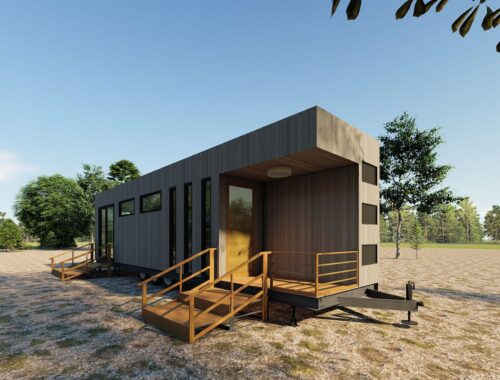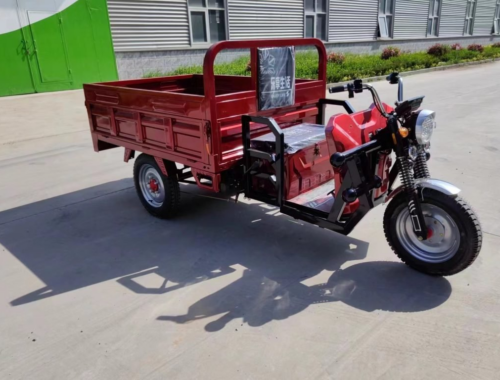Alone and Stranded on Latok I
The true story of a daring rescue on one of the Himalayas’ most notorious peaks
By July 25, Alexander Gukov and Sergey Glazunov had been on Latok I for 14 days. The Russian climbers had brought just five days’ worth of food for their final push on the 23,440-foot peak in central Pakistan, and their rations were nearly gone. They were attempting the North Ridge, an 8,200-foot sharp fin of rock and ice that rises up from the glacier below. But as increasingly bad weather moved in, the men were making a hasty retreat down the mountain.
Glazunov was in the lead, rappelling the wall they had climbed just days earlier, building their next anchor, and waiting for Gukov to follow him down before pulling the ropes and repeating the process all over again.
In 1978, Americans Jim Donini, Michael Kennedy, and cousins George and Jeff Lowe made the first attempt on Latok I’s North Ridge. They spent 21 days on the route before being forced back just 500 feet shy of the summit, but their expedition had become one of alpine climbing’s most enduring sagas. In the years since, there had been more than two dozen attempts on the line; none of the parties had made it farther than the Americans’ high point. Adding to the allure, the mountain had been summited just once, from any direction, by a Japanese team in 1979.
Gukov, a blue-eyed 42-year-old from Saint Petersburg, Russia, was fascinated by the line’s complicated, ever-changing terrain. He made his first attempt on the North Ridge in 2017, with two other Russian climbers, Anton Kashevnik and Valery Shamalo. The team got as high as 22,000 feet before being forced to turn around. “We would have done it,” Gukov later wrote in the American Alpine Journal. “I’m certain, but the weather was constantly against us…It snowed for all but two days of our 15-day attempt.” Conditions during the descent were treacherous, and both Kashevnik and Shamalo lost a few toes to frostbite. “Though we didn’t summit, I’m confident I have a good chance next time,” Gukov wrote.
At just 26 years old, Glazunov was already an accomplished alpinist and a fitting partner for Gukov’s next attempt. Glazunov worked as a climbing guide and coach in his hometown of Irkutsk, a city in eastern Siberia, and was one of the strongest climbers in Russia. He and his brother, Evgeniy, had ticked off a long list of first ascents in Kyrgyzstan and their home country.
Gukov and Glazunov arrived at the foot of Latok I on July 1 with fellow Russian climbers Victor Koval, Konstantin Markevich, and Alexander Parfenov, who were attempting another line on the mountain. The team pitched their tents on the dirt platforms hacked into the hillside on the edge of the Choktoi glacier moraine, the iconic ridgeline looming above them. Shortly before they arrived, a team from Korea had packed up and left because of extreme avalanche danger.
On July 12, Gukov and Glazunov started up the ridge. Every day or so, they sent updates on their progress to their friend Anna Piunova, editor of the climbing website Mountain.ru. Their Iridium satellite messenger limited communication to 160 characters at a time, so they wrote in simple, clipped sentences:
“Overnight stay at 5512m. Everything Ok.”
“Leaving our heavy st[u]ff. Taking food for 5 days.”
“All day was climbing vertical snow mushrooms. Stop for overnight, everything Ok.”
On July 20, Koval’s team turned back. “On our route to the right side of north ridge,” he wrote. “Not safe conditions.” Rocks rained down all around them. Markevich was struck in the head and chest, shattering his helmet and one of his ribs. Small avalanches swept down the face. Meanwhile, Gukov and Glazunov pressed on.
“Wether [sic] get better,” Gukov wrote. “Steep wall in the front. Tomorrow depended on weather.” The batteries on the Iridium dwindled, and communication was reduced to the necessities.
On July 23, during yet another spell of bad weather, Glazunov led a pitch to what he thought was the summit. “It’s Latok I,” he shouted down to Gukov.
"Bring me up," Gukov yelled back.
But Glazunov didn't think he could build a belay anchor—he was surrounded by precarious snow mushrooms. So Gukov stayed a rope length below. The weather worsened, and the two men began their retreat.
As they descended, Gukov became convinced that they had only reached the western summit, a couple hundred feet lower than the true summit. Still, all things considered, the expedition was a success—they had, after all, become the first party to climb the entire ridge.
Neither Koval nor Piunova had heard from the men in days, and they were worried. Piunova called for a military helicopter to check on them. On July 25, the pilot spotted them rappelling down the ridge at 21,980 feet and dropped a bit of extra food and fuel, which Glazunov somehow caught out of the air. Everything seemed okay.
The men continued down the mountain, with Glazunov leading the way. At 21,300 feet, Gukov stood on a small ledge; Glazunov was out of sight below. The taut rope holding Glazunov went slack as he busied himself building the next anchor. Normally, it only took him a couple minutes to construct a rappel station, but this one seemed to be taking longer than usual.
Gukov yelled down to his partner but got no reply. A few moments later, he yelled again, but all he could hear was the wind whipping across the ridge. Ten minutes passed, then 30, and still nothing. Gukov placed an ice screw—his last—and rappelled down to look for Glazunov, but there was no sign of him, just a rope attached to a single piton hammered poorly into the rock. Gukov didn’t know what happened—Glazunov could have slipped while he was transferring his weight to the next anchor—but he did know that Glazunov had nearly the entire climbing rack, including all the supplies needed to continue retreating down the ridge.
He looked through his pack, assessing his gear: one small tent, a stove with fuel, a down sleeping bag, a water bottle, what was left of the chocolate bars the pilot had dropped off the day before, and the Iridium satellite messenger—with only 2 percent battery power remaining.
He quickly hit the SOS button and typed out a note to Piunova: “I NEED HELP. EVACUATION REQUIRED. Sergey fell. I’m hanging with out any gear.”
In Moscow, Piunova received Gukov’s message at 12:24 p.m. and immediately called the Russian embassy in Islamabad. She knew there were two ways to save Gukov, and both required something she couldn’t organize on her own: a helicopter.
The preferred method was a long-line rescue. To execute that approach, a helicopter would need to fly in close to Gukov while dangling a nearly 100-foot length of high-strength rope fitted with a D-ring on the end. Gukov would need to grab the rope and clip it to his harness before being hoisted to safety. The second option was dropping other experienced climbers near Gukov with the supplies to help him descend the rest of the ridge. This technique had worked earlier in the year on nearby Nanga Parbat, when Adam Bielecki, Denis Urubko, Piotr Tomala, and Jarosław Botor came to the aid of French climber Elisabeth Revol. But it also had the potential of putting even more people in harm’s way.
The ambassador’s assistant, Vladimir Victorovich Zaicev, quickly arranged for two Écureuil AS350 B3 helicopters to launch from Skardu, a town of 500,000 about 45 miles to the south of the mountain. The B3s were the helicopter of choice for Pakistan’s 5th Army High Altitude Aviation Squadron, who would be leading the rescue. But high winds and low visibility prevented them from getting close to Gukov.
Helicopters can’t fly anywhere, let alone at high altitude in big mountains, when visibility is low. Despite Piunova and Koval’s urgency, the rescue operation proceeded along a stutter-stepping trajectory. Day after day, when the weather allowed a helicopter to take off, it would invariably hit conditions that forced it back long before getting to Gukov. On one flight, a pilot thought he spotted Glazunov’s body near the bottom of the mountain, but a closer look at a few photos he snapped showed it to be an empty sleeping bag.
Eight inches of new snow fell high on the mountain, which meant that even if they could get a helicopter close enough to Gukov to attempt a rescue, the resulting wind from the blades might trigger an avalanche.
After Glazunov disappeared, Gukov carefully made his way to a perch the size of a dinner table at 20,650 feet and set up his tiny orange tent. His stove allowed him to melt snow for water, but he was soon out of food. He began to weaken. A seemingly constant stream of avalanches fell on his tent. The cold made it difficult for him to use his hands.
Gukov started to hallucinate—twinkling snowflakes and faraway landscapes flittered in and out of his vision.
Desperation began to show in his messages to Piunova: “Bad mood: shitty weather. Nobody will save me… Fuck [this] situation. Where [are] all these avalanches coming from? Can’t make any water…[but] Was able to [find] half of the Snickers bar and [a] little water…”
Then his sat phone died.
“Mountain clearing out. We can see [to] 6300m,” Koval wrote to Piunova on July 30. The next day, two B3s launched from Skardu at 4:45 am.
After more than six days alone on the ridge, Gukov’s tent was buried underneath the snow, and it took nearly an hour for the pilots to locate him on the massive ridgeline. The High Altitude Aviation Squadron had settled on the long-line technique, and two of their helicopters worked in tandem, hovering above the North Ridge. The chopper in front maneuvered the long line toward Gukov while the chopper in back worked as a spotter, relaying directions to the other pilot over the radio: left, right, down, up. The pilots needed to be precise. If the long line snagged on an outcropping of rock, it could bring the entire helicopter down.
For five minutes, the pilots finessed the line back and forth over the ridge while the depleted Gukov grasped for it. Finally he held it tight and clipped in. The helicopter began its descent with Gukov dangling in the wind.
After so many days at altitude, Gukov’s brain had started to swell. One of the climbers at base camp administered dexamethasone, a corticosteroid used to treat acute mountain sickness.
Gukov was evacuated to a military hospital in Skardu and then transferred the next morning to a hospital in Islamabad. He was exhausted, dehydrated, and near starvation. His feet were racked with frostbite, but luckily the swelling in his brain had gone down and his condition was slowly starting to stabilize. His relief at finally being off the ridge was tempered by the memory of his partner. “We tried with my friend,” Gukov told a reporter from RT, an English-language news site based in Russia. “He [was] a young but brave man, 26 years old.”
Gukov forced a smile as he looked up at the camera and spoke briefly about his time stranded on the ridge. “For seven days, every day, I have more and more hallucination dreams where everything is finished and I am at home, I am with my friends. But every morning when I wake, open my eyes, I saw that I am in the same position.”
A nurse tended to the frostbite on his hands with a towelette. Gukov’s feet were wrapped in white bandages and propped under a heat lamp. After the interview, another nurse wheeled him into the hallway, where a woman and two small children handed him a bouquet of flowers.
The scene seemed staged for the cameras, and he awkwardly nodded his head at the woman. But it didn’t matter. Gukov was going home.
You May Also Like

コンテナハウスの魅力と活用方法
March 14, 2025
Block Blast: The Ultimate Puzzle Challenge
March 19, 2025